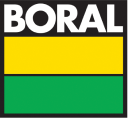A history of innovation
The Boral Materials Technical Services concrete laboratory has a long history of innovation and is at the forefront of concrete technological advances in Australia and the world. Some examples include:
- 1966-68: The development and use of fly ash in concrete.
- 1966-69: The development and use of retarded coloured brick mortars.
- 1970-72: The development and use of ground granulated blast furnace slag as a cement replacement.
- 1969-72: The development and use of foam cellular lightweight concrete for use in the Sydney Opera House and subsequent roll out and use around Australia.
- 1973-74: Introduction of vacuum dewatering technology.
- 1973-74: Constructed the first commercial concrete-walled house using special formwork to emulate a brick pattern.
- 1974-78: The development of super plasticiser admixtures and self-levelling concrete called Superflow with rollout around Australia. The products were the forerunners to the more general use of super workable concrete of the 1990s and to present day.
- 1986-90: The development and production of high strength concrete such as 80MPa and 100MPa were carried out by the research laboratory.
- 1996-98: The use of a new surface hardness performance testing method (Chaplin Abrasion test) to develop high-performance concrete for Sydney projects such as the Fairfax Production Facility at Chullora and the Franklins Distribution Centre in Ingleburn.
- 1995-99: The use of new durability tests to develop high performance, high durability concretes for use in projects such as the M5 and Walsh Bay Development in Sydney as well as numerous other projects around Australia.
- 1995-present: Development of "Green Concrete" – now sold as Envirocrete® with use of recycled raw materials contributing up to 42 per cent potential reduction in greenhouse gas emissions.
- 2009-present: Assisted in the development of ENVISIA® lower carbon concrete with high early strength, superior durability and lower shrinkage.
- 2009-10: Introduction of remote, computer-based temperature-matched curing at Baulderstone's Port Botany Project to enable early stripping without cylinder testing.
- 2011-present: Development of high durability asphalt and related products such as Durapave®, Railpave® and Aeropave®.
- 2017-present: Development of Aspire®, a very high strength, high modulus of elasticity, low shrinkage concrete for high rise buildings.
- 2018-present: Development of Enflo®, a self-compacting concrete.
- 2020: Development work into using recycled glass in concrete and recycled glass, recycled plastic and ink toner in INNOVO™.
